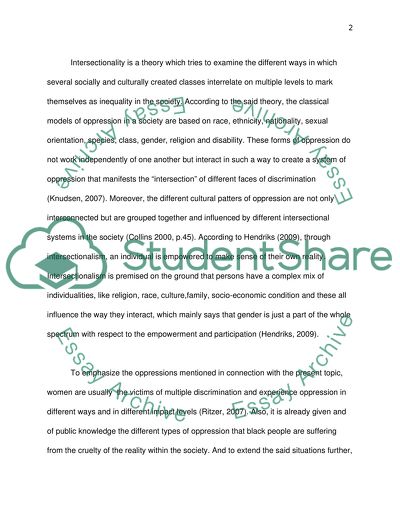Cite this document
(“In what ways can the concept of intersectionality be used to help us Essay”, n.d.)
In what ways can the concept of intersectionality be used to help us Essay. Retrieved from https://studentshare.org/miscellaneous/1559232-in-what-ways-can-the-concept-of-intersectionality-be-used-to-help-us-understand-the-disadvantage-and-discrimination-faced-by-black-and-minority-ethnic-women-who-have-contact-with-the-criminal-justice-system
In what ways can the concept of intersectionality be used to help us Essay. Retrieved from https://studentshare.org/miscellaneous/1559232-in-what-ways-can-the-concept-of-intersectionality-be-used-to-help-us-understand-the-disadvantage-and-discrimination-faced-by-black-and-minority-ethnic-women-who-have-contact-with-the-criminal-justice-system
(In What Ways Can the Concept of Intersectionality Be Used to Help Us Essay)
In What Ways Can the Concept of Intersectionality Be Used to Help Us Essay. https://studentshare.org/miscellaneous/1559232-in-what-ways-can-the-concept-of-intersectionality-be-used-to-help-us-understand-the-disadvantage-and-discrimination-faced-by-black-and-minority-ethnic-women-who-have-contact-with-the-criminal-justice-system.
In What Ways Can the Concept of Intersectionality Be Used to Help Us Essay. https://studentshare.org/miscellaneous/1559232-in-what-ways-can-the-concept-of-intersectionality-be-used-to-help-us-understand-the-disadvantage-and-discrimination-faced-by-black-and-minority-ethnic-women-who-have-contact-with-the-criminal-justice-system.
“In What Ways Can the Concept of Intersectionality Be Used to Help Us Essay”, n.d. https://studentshare.org/miscellaneous/1559232-in-what-ways-can-the-concept-of-intersectionality-be-used-to-help-us-understand-the-disadvantage-and-discrimination-faced-by-black-and-minority-ethnic-women-who-have-contact-with-the-criminal-justice-system.


